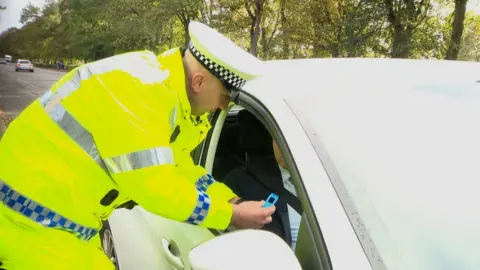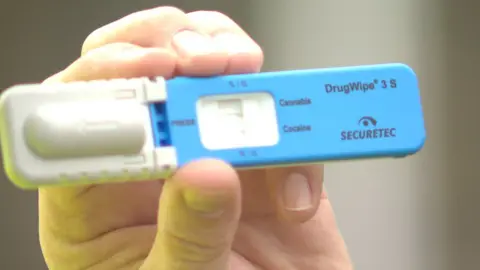Expert warns drug-driving 'could soon exceed' drink-driving
 BBC
BBCThe number of drug-driving cases in Scotland could soon exceed the number of drink-driving offences.
A Scottish Police Authority paper warned toxicology requests have "far outstripped" the estimated demand since last year's new legislation.
And casework volumes now exceed capacity by 200%.
Tom Nelson, director of Forensic Services, said one of the main challenges is the complexity of testing for 17 drugs, from cocaine to diazepam.
He said examination and turnaround times are much longer than the more simple blood alcohol work.
Mr Nelson added that initial estimates of 800 cases a year were later increased to 1,000.
But he added: "With the number of cases still steadily increasing, this year there could more than two or three times as many samples for analysis than the original estimated figure and the number of drug-driving cases could soon exceed those for drink-driving.
"To examine, detect, and quantify each of the 17 drugs is complex and time-consuming work."

The SPA paper notes prosecutions in England and Wales were initially used to estimate "future volumes" as the service was new in Scotland.
Early plans in 2017 were geared towards a forecast of 800 cases per year and last summer required capacity was increased to an estimated 1,000 cases.
But figures from Police Scotland's most recent quarterly performance report show a 12.9% increase in "drink/ drug driving offences", up 751 from last year.
The new drug driving legislation and roadside testing, which include the use of drug wipes to check for cannabis and cocaine, accounts for 616 of these offences.
As well as recreational drugs the tests also look for traces of medication that could cause impairment, such as methadone and morphine.
And the report notes: "Whilst all best estimates were used to forecast future casework volumes the actual work being received by Forensic Services has been considerably higher than the service provision in place to the extent that now volumes exceed current capacity by in the region of 200%."
'High volumes'
Addressing the issue of why the estimates were too low, the paper states: "Testing in England and Wales, when new legislation was put in place, was lower than it is today therefore the figures used to forecast future volumes in Scotland were based on an early data set.
"This position does look to have changed as prosecutions for drug driving in England and Wales now exceed drink driving highlighting the scale of the drug driving - this fact was not known at the time the capacity was being developed for the Scottish service and the potential impact this might have."
The report states demand has grown steadily during the Covid-19 lockdown.
It added: "While at this stage it cannot be reasonably forecast whether these high volumes will continue it is clear that the original planned service capacity was too low.
"However, the learning from England and Wales does indicate that the volume of drugs driving cases is likely to exceed that of drink driving in the near future."
In order to address the issue, one proposal is to increase lab capacity and the Scottish government has provided £180,000 additional funding to do this.
The report concludes the service is valuable as about 85% of samples analysed from those accused of drug driving detected at least one substance above the stated limit.
